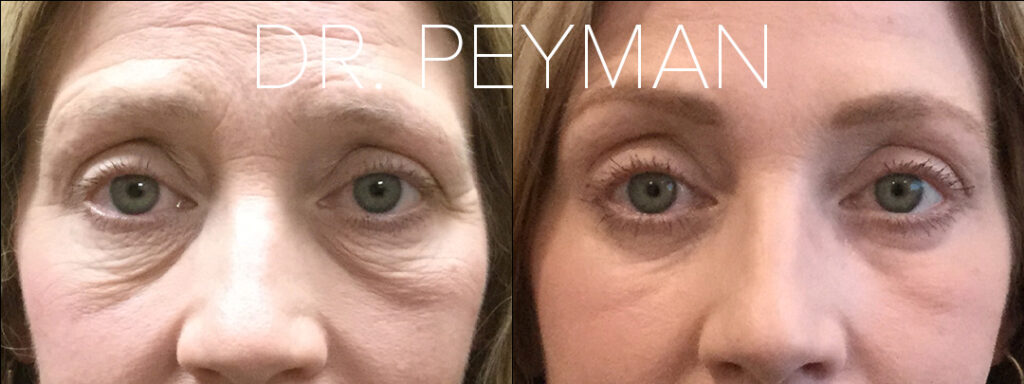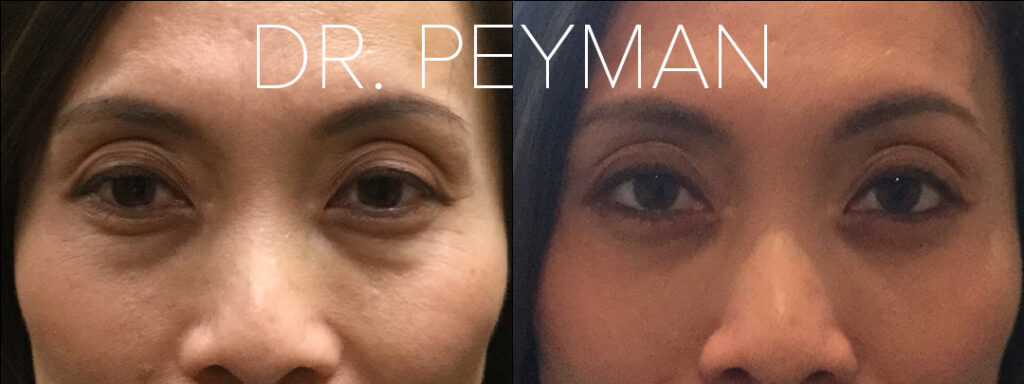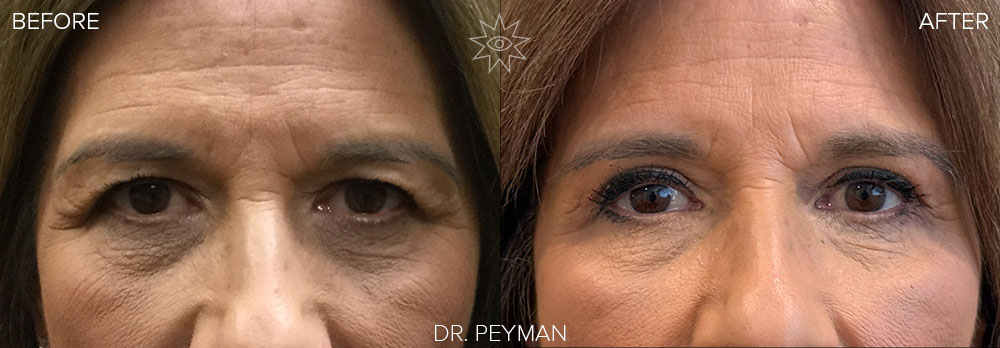The eyes are often called the windows to the soul, but factors like aging, genetics, and sun exposure can sometimes lead to unwanted changes like bags, wrinkles, and loose skin under the eyes. Fortunately, there are effective procedures to rejuvenate this delicate area. Surgical lower eyelid blepharoplasty may be sufficient alone. In other cases, laser skin resurfacing may be sufficient alone. And sometimes both may be indicated. As it turns out, your skin tone can play a significant role in the decision making process. Let’s explore these options.
Lower Eyelid Blepharoplasty: Addressing Structure
Lower eyelid blepharoplasty is the surgical solution specifically designed to address more significant structural issues under the eyes.
- What it targets: This procedure excels at correcting puffy “bags” caused by displaced fat pads and removing substantial amounts of excess, sagging skin.
- How it’s done: A surgeon makes precise incisions, often hidden just below the lower lash line or even inside the eyelid (the transconjunctival approach). Through these, they can skillfully remove or reposition the fat causing the bags and trim away loose skin for a smoother, more youthful contour.
- When it’s ideal: If your primary concerns are prominent under-eye bags or significant skin laxity, surgical blepharoplasty is often the most effective approach.
Laser Skin Resurfacing: Refining Texture and Tightness
Laser skin resurfacing takes a different approach, using focused columns of laser very densely spaced to ablate the skin’s surface.
- What it targets: This technique is fantastic for improving skin texture, smoothing out fine lines and wrinkles, and providing a degree of skin tightening.
- How it works: Lasers like CO2 remove the outermost skin layers and gently heat the deeper layers. This process triggers the body’s natural healing response, encouraging new collagen growth – the protein responsible for firm, elastic skin.
- When it’s ideal: If your main issues are fine lines, slightly crepey skin, or mild looseness without large fat bags, CO2 laser resurfacing can be a powerful tool. It can sometimes be combined with surgery or used alone. It generally takes the skin back 10 years and only has to be done once.
The Crucial Factor: How Skin Tone Influences Choice
Here’s where the consultation with your doctor becomes vital, as skin tone significantly impacts the suitability of laser treatments.
- For Lighter Skin Tones: Individuals with lighter complexions generally have a lower risk of experiencing pigmentation changes (like dark or light spots) after laser resurfacing. This makes procedures like CO2 laser an excellent option for them when the goal is primarily skin tightening and wrinkle reduction. The laser can effectively rejuvenate the skin surface with predictable results.

For Darker Skin Tones
- For Darker Skin Tones: Darker skin contains more melanin, which can react unpredictably to the heat and light energy of certain lasers, increasing the risk of hyperpigmentation (darkening) or hypopigmentation (lightening).
- Caution with Lasers: While laser isn’t impossible, it requires greater caution, often lower energy settings, and potentially a “test spot” to gauge the skin’s reaction, as your doctor might have mentioned.
- Surgery as a Primary Option: Because of these laser-related risks, surgical lower eyelid blepharoplasty is often the preferred and safer primary approach for individuals with darker skin tones who need under-eye rejuvenation, especially if significant bags or skin excess are present. Surgery directly addresses the underlying structure without relying on laser-skin interaction for the main correction, thus avoiding the specific pigmentation risks associated with laser resurfacing.

Beyond Skin Tone: Other Considerations
While skin tone is key for laser suitability, the final decision also depends on:
- The Specific Problem: Are fat pads the main issue, or is it skin texture, or both?
- Degree of Laxity: How much loose skin is present?
- Patient Goals & Preferences: What outcome are you hoping for, and what level of invasiveness and downtime are you comfortable with?
Conclusion: Consultation is Key
Choosing the right lower eyelid procedure is a personalized decision. Understanding the differences between surgical blepharoplasty and laser resurfacing, and how your unique skin tone influences the best approach, is the first step. As highlighted during consultations, the most effective and safest treatment plan is one customized specifically for you. Always consult with us to discuss your concerns, examine your anatomy, and determine the ideal path to achieving your desired under-eye rejuvenation.

